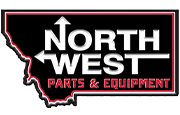Choosing a Track Loader
Picking out a new track loader involves a lot of important considerations. You’ll want to think about speed, hydraulic power, and comfort. All of these elements contribute to the overall speed and efficiency of a track loader's performance, but one key element that also needs extra consideration is the type of undercarriage. Just like the tires on a car or tractor, there’s not really any one type of undercarriage that will work perfectly for every job. There are two distinct styles—the rigid mounted and suspended undercarriages—and each one has their own strengths and weaknesses.
Read on to find out more about how to choose a track loader. When you feel informed enough to shop, visit Northwest Parts and Equipment in Columbia Falls, MT. We also serve patrons in the Kalispell and White Fish, MT area.
Rigid Mounted Undercarriages
The key to getting an even grade is to have a machine that can hold stable, no matter what kind of terrain it’s working on. The Rigid mounted undercarriage does just that, as its tread helps maintain a constant distance between the lift arm and each side of the carriage. This occurs because there’s no suspension to adjust the undercarriages position on the ground, which holds the whole machine together in a rigid posture. While this might sound a little crude for traveling over long distances, this setup is perfect for getting an even grade. Since the arms hold still, you can push material very much the same way that you would with a bulldozer. Obviously, this lack of a suspension means that the rigid mount setup doesn’t work so well for navigating across rough terrain. However, a track loader is heavy enough to dig the tread into tough surfaces lined with mud, gravel, and some other unstable materials. The tread markers will still get some traction in these areas, which allows you to move certain loads long distances. If you’re looking for a rental to focus specifically on even grades and short trips, a track loader without a suspension is the best choice.
One additional advantage to these types of Bobcat track loaders is how much easier they are to maintain. A CTL with a solid mounted undercarriage has fewer moving parts, meaning less places to break, and therefore much less maintenance. These models are also quite a bit more durable, as the fewer parts in the track loader undercarriage are less likely to break down.
Suspended Undercarriages
A Bobcat track loader with a suspended undercarriage performs completely differently from one that’s mounted on a rigid structure. These models use suspended tread, which keeps your track glued to the ground, no matter how bumpy, uneven, or rough the surface material is. While this isn’t great for getting an even grade, it is much more efficient when you’re trying to shorten your cycle times. More track on the ground means better traction, and as we all know, better traction leads to increased speed and performance. On top of that, the extra track-to-ground contact affords your drivers more power for pushing and maneuvering through tough spots, which allows these types of track loaders to handle much more difficult jobs than you could ever do in a rigid mounted model. And along with better performance, that suspension also helps make the ride more comfortable for your workers. The suspension smooths out the ride, unlike a rigid undercarriage, which lets you feel every single bump along the way. As your workers feel more comfortable operating this equipment, you’ll also see even more productivity, because a comfortable worker is much more likely to work faster and harder.
We hope you have gained some knowledge and confidence to start shopping for your track loader. Stop by Northwest Parts and Equipment today to find the right equipment for your work site. Our experts will be standing by to assist.
